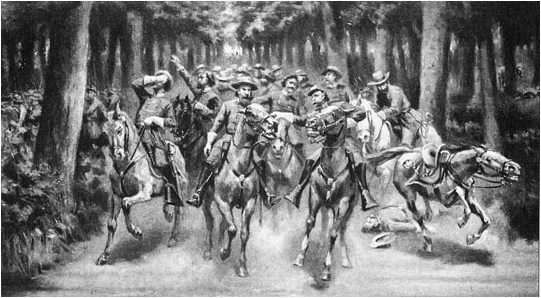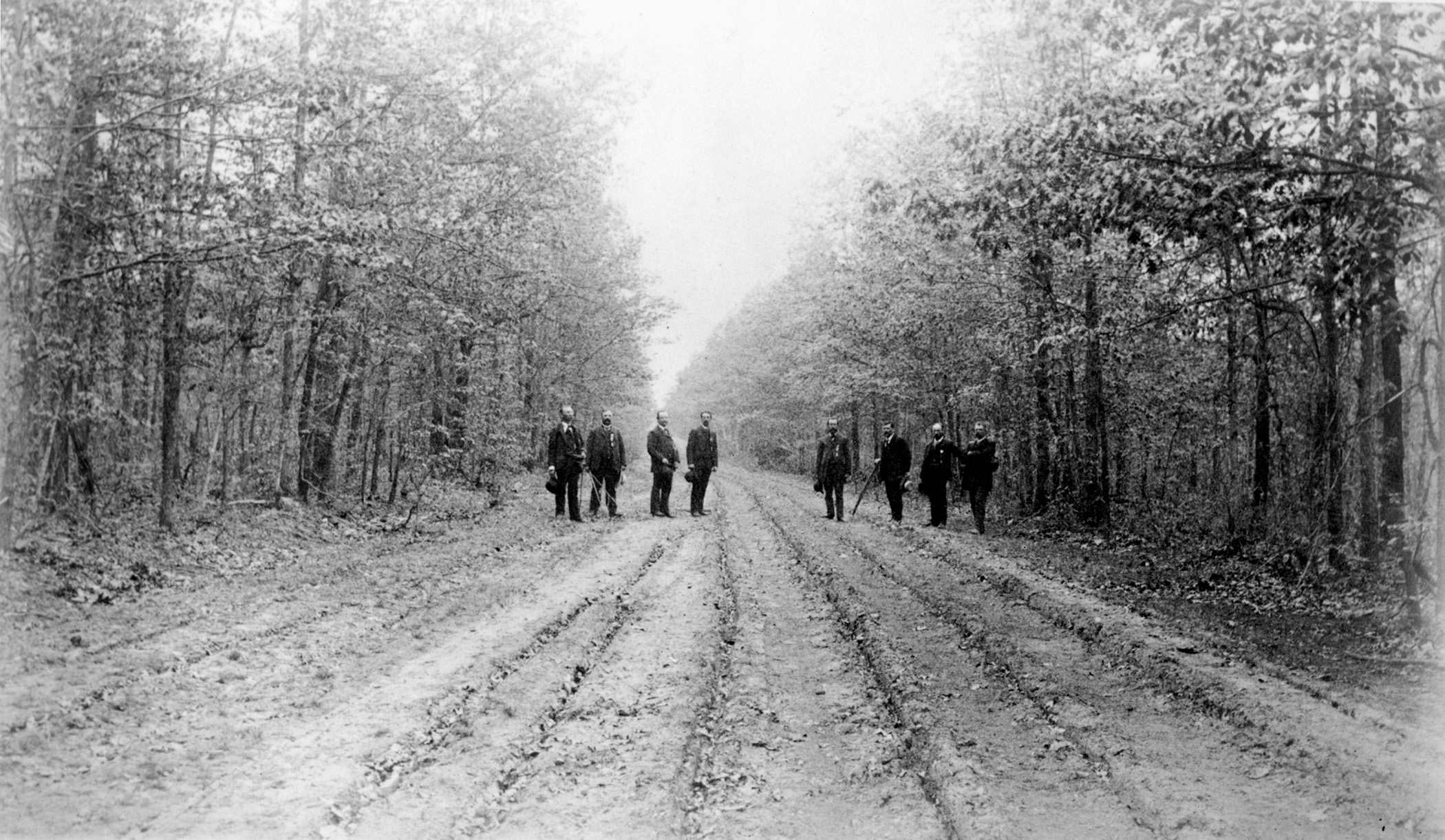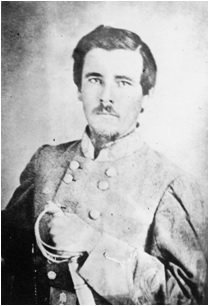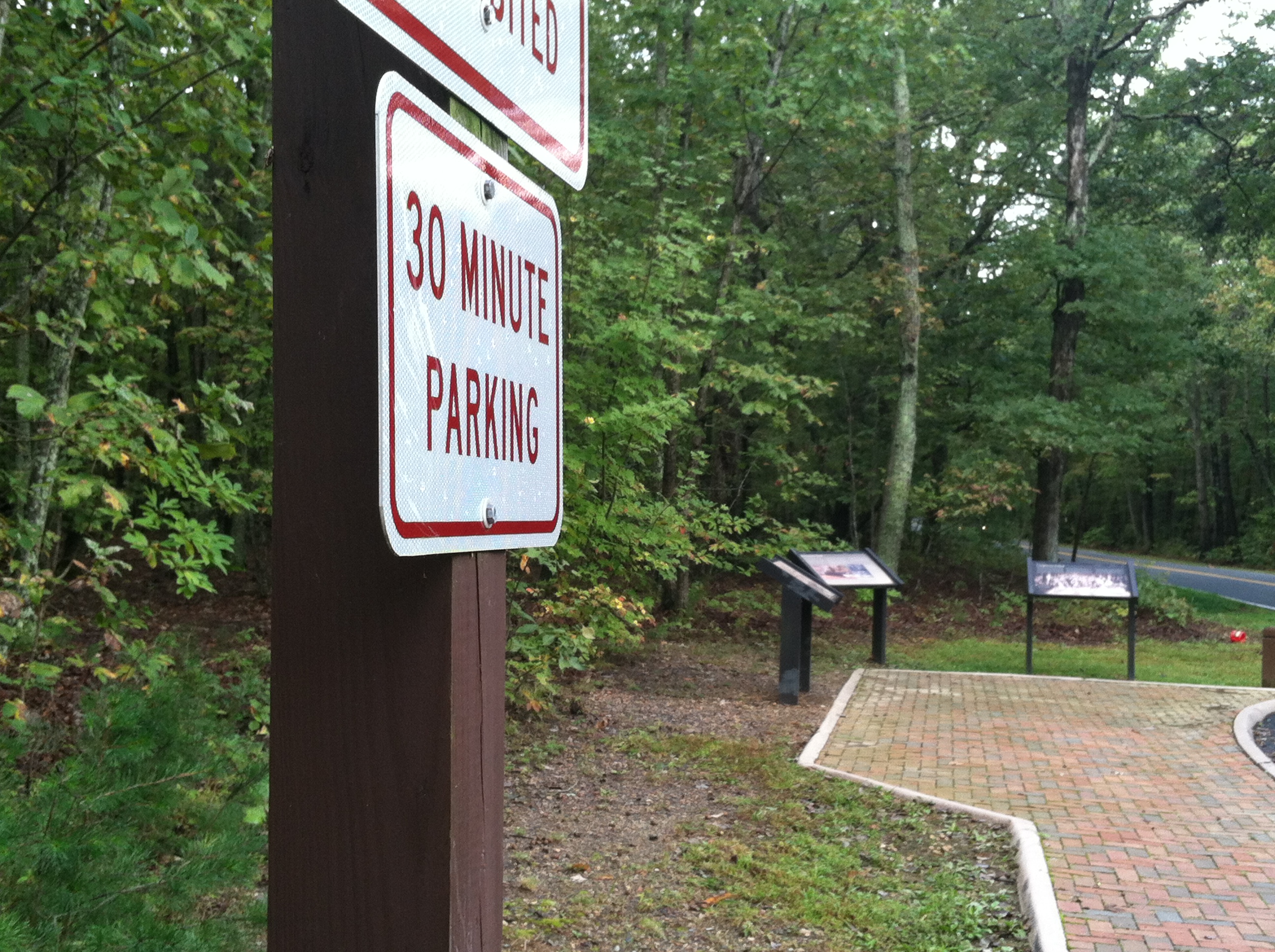Forgotten Casualty: James Longstreet Wounded in the Wilderness: Part Two
Authored by Chris Mackowski and Kristopher D. White:
Click here to read part one in this series.
“In the shaded light of the dense tangle, a shot or two went off, then more, and finally a strong fusillade,” said Sorrel, who was riding next to Longstreet.
Hardly had the sound of cheering died away from Jenkins’s men, Dawson recalled, “when a withering fire was poured upon us from the woods. [Mahone’s] men supposed that the enemy were upon them. Without orders one soldier discharged his piece, and a volley was then fired by the whole line.”

“Steady, men! For God’s sake, steady!” yelled Jenkins just before he slumped in his saddle with a bullet wound to the head.
At the same moment, Longstreet “received a severe shock from a minie ball passing through my throat and right shoulder,” the general recalled. A newspaper account published on May 28 provided more specifics: “The ball struck him on the right of the larynx, passing under the skin, carrying away a part of the spine of the scapula, and coming out behind the right shoulder.”
Sorrel, who’d been looking at Longstreet at that moment, saw the bullet hit. “He was a heavy man, with a very firm seat in the saddle, but he was actually lifted straight up and came down hard,” the chief of staff said.
Longstreet settled back in his seat and started to ride on, “waving his left hand…to Mahone’s troops, who recognized him and stopped, horror-stricken at what they had done,” Hawkins said. But Longstreet quickly realized the severity of his wound. “[T]he flow of blood admonished me that my work for the day was done,” the general said.
As the 12th and 41st Virginia regiments traded fire, the color-bearer of the 12th stepped out onto the Plank Road and waived his colors over his head, “although a line of our own men, not more than fifty yards—indeed, not that far—in his front were at the time pouring a deadly fire into us,” a 12th Virginian said.
Meanwhile, the leading files of Jenkins brigade fell out of line and prepared to fire into the woods, too. Kershaw, who’d escaped injury, dashed his horse into their ranks and, in a clear voice, called “F-r-i-e-n-d-s!” Signal officer J.H. Manning did likewise. “They…instantaneously realized the position of things and fell on their faces where they stood,” Kershaw said.
Longstreet, “who had stood there like a lion at bay,” Dawson said, “reeled as the blood poured down over his breast, and was evidently badly hurt.” Jenkins, insensible, convulsed on the ground as one of his best friends tried to comfort him. Lieutenant Alfred Doby and courier Marcus Baum were also killed. A witness at the First Corps hospital later described “the white horse of Marcus Baum…trotting into camp, his neck sprinkled with the lifeblood of the gallant rider.”
Haskell, for one, believed the casualty list could’ve been worse. “Fortunately they fired high, or there would have been a terrible slaughter. As it was…the effect was horrible.”
One possible reason to account for the high fire was that the 12th Virginia had just crested the fairly steep hill on the north side of the road. Firing slightly uphill would have made their shots go high.
Participants later attributed the accident to the Wildernesses thick underbrush, the confusion of battle, the scattered Federal forces that had just recently been scurrying through the woods, the “dark uniformed men” marching on the roadway. At the time, no one knew what was happening. “My own conviction,” Dawson later admitted, “was that we had ridden into the midst of the enemy, and that nothing remained but to sell our lives dearly.”
As Longstreet turned to ride back, he swooned. His staff immediately dismounted him and laid him near the foot of a tree. “He was almost choked with blood,” Sorrel noted.
“It seemed that he had not many minutes to live,” Dawson recalled. In “desperate haste,” he rode off to the nearest field hospital and found Dr. John Syng Dorsey Cullen, the First Corps’s medical director. “I made him jump on my horse, and bade him, for Heaven’s sake, ride as rapidly as he could to the front where Longstreet was,” Dawson said.

Longstreet, meanwhile, with bloody foam bubbling from his lips, beckoned members of the staff to lean close. In a whisper, he urged someone to find General Lee and “tell him that the enemy were in utter rout, and if pressed, would all be his before night,” Haskell said.
Cullen soon arrived and staunched the bleeding, and Longstreet was quickly loaded on a litter into an ambulance. Kershaw urged speed. Federal artillerist, who’d heard the exchange of gunfire, had begun to lob shells in their direction. “Fortunately, the shots were passing high but were nevertheless dangerous,” an observer said.
Jenkins, who also received medical attention, did not fare as well. He babbled incoherently, gray matter oozing from the wound in his forehead. His boyhood friend, Colonel Ashbury Coward knelt down to comfort him. “Taking his hand in mind, I said: ‘Jenkins…Mike, do you know me?’” Coward recalled. “I felt a convulsive pressure of my hand. Then I noticed that his features, in fact his whole body, was convulsed.”

The downed brigadier would last a few hours before finally dying. “Jenkins was a loss to the army,” Sorrel later said: “brave, ardent, experienced and highly trained, there was much to expect of him.” In fact Longstreet on more than one occasion urged Richmond to promote Jenkins to full time division command.
The ambulance took Longstreet rearward to the field hospital at Parker’s Store, three miles to the rear. “The members of his staff surrounded the vehicle, some riding in front, some on one side and some on the other, and some behind,” said Artillerist Robert Styles, who encountered the group on their trek. “I never on any occasion during the four years of the war saw a group of officers and gentlemen more deeply distressed. They were literally bowed down with grief. All of them were in tears.”
When Stiles rode up to the ambulance and looked in, he noticed that Cullen had removed Longstreet’s hat, coat, and boots. “The blood had paled out of his face and its somewhat gross aspect was gone. I noticed how white and dome-like his great forehead looked,” Stiles recalled.
He also noted the fine gauze undervest Longstreet wore, stained with the black red gore from his breast and shoulder. “Longstreet very quietly moved his unwounded arm,” Stiles said, “and, with his thumb and two fingers, carefully lifted the saturated undershirt from his chest, holding it up a moment, and heaved a deep sign. He is not dead, I said to myself, and his is calm and entirely master of the situation.”
Soldiers lining the road, who could not see Longstreet, began to say the general was dead and that they were only being told he was wounded in order to hide the calamity from them. “Hearing this repeated from time to time,” Longstreet later wrote, “I raised my hat with my left hand, when the burst of voices and the flying of hats in the air eased my pains somewhat.”
Not long thereafter, the ambulance met Lee. “I shall not soon forget the sadness in his face, and the almost despairing movement of his hands, when he was told Longstreet had fallen,” Dawson remembered.
Lee would sorely miss his Old War Horse as the battle continued that afternoon. Before being loaded onto the ambulance, Longstreet had turned over command to Field and urged him to continue the attack. General Richard H. Anderson soon arrived on the scene and, as senior major general, and command technically devolved to him, but he had little idea of what was going on or what to do next.
In the wake of Longstreet’s wounding, Field opted to reorganize the brigades on hand. “No advance could be possibly be made till the troops parallel to the road were placed perpendicular to it,” he said, “otherwise, as the enemy had fallen back down the road, our right flank would have been exposed to him, besides…neither could move without interfering with the other. To rectify this alignment consumed precious time.”
It would be four o’clock before the realigned troops were ready to advance. In the meantime, said Sorrel, “the foe was not idle. He had used the intervening hours in strengthening his position and making really formidable works across the road.” Union General Hancock, in charge of the Federal position, later admitted that even by three o’clock his position hadn’t been solidified, but by four o’clock, when the attack finally came, Hancock was ready for it. The Confederates broke through briefly but were repulsed with heavy losses.
“Could we have pushed forward at once,” Field later said, “I believe Grant’s army would have been routed, as all that part which I had attacked was on the run.” He wasn’t the only Confederate to hold that opinion. “I have always thought that had General Longstreet not been wounded,” said Walter Taylor, Lee’s chief of staff, “he would have rolled back that wing of General Grant’s army in such a manner as to have forced the Federals to recross the Rapidan.”
Grant himself, writing in his memoirs after the war, reckoned Longstreet’s loss as “a severe one to Lee, and compensated in a great measure for the mishap, or misapprehensions, which had fallen to our lot during the day.”
Longstreet’s boots would be hard to fill. Lee would miss his level head and counsel, not to mention his experience at corps command. That lack of experience would prove costly in just a few days at Spotsylvania Courthouse. Richard Ewell, commanding the center of the Confederate line, positioned his men poorly, creating a salient in the Confederate position. A brief breakthrough against the salient on May 10th got Ewell’s fighting spirit up, so rather than withdraw to a more secure fallback position, he resolved to bolster and hold the salient. On May 12, the entire Union 2nd Corps attacked the Mule Shoe and broke through, nearly costing Lee his army. Ewell was apoplectic at the news and unable to react effectively. Lee realized that Ewell was “too much overwhelmed to be efficient” in tight spots.
Longstreet, who had an eye for defensive terrain, might’ve argued against the vulnerable salient in the first place. As the most experienced corps commander, he might likely have been placed in the center of the Confederate line instead of Ewell. And, as Antietam had proven, Longstreet didn’t lose his head in the face of a Union breakthrough.
At North Anna, as the Union army stumbled into a trap Lee had laid for it on May 24, Lee himself lay incapacitated by dysentery and exhaustion. “We must strike them a blow,” he muttered in near delirium, unable to strike that blow himself. Nor did he trust his subordinates to strike that blow: A.P. Hill had badly bungled things the day before (not to mention Bristoe Station.); Ewell had lost Lee’s confidence because of his poor showing at Spotsylvania; and Anderson was still too inexperienced at corps command. Longstreet’s stalwart presence was again sorely missed.
Longstreet’s absence would be even more acutely felt as the campaign moved onward and illness and inexperience continued to plague the corps commanders of the Army of Northern Virginia. The relentless pressure Grant brought to bear against the Confederates would also prove trying. Throughout, Lee had no one he could turn to.
But all that would be down the road. On the evening of May 6, Longstreet had been taken to the field hospital at Parker’s Store. The next day, he was moved to the home of his friend and quartermaster, Erasmus Taylor, before being put on a train to Lynchburg. “He is very feeble and nervous and suffers much from his wound,” observed one of the women who tended him on a stopover in Charlottesville. “He sheds tears on the slightest provocation and apologizes for it. He says he does not see why a bullet going through a man’s shoulder should make a baby of him.”
Once in Lynchburg, he stayed for a time with a relative, but Federal raiding parties made the area unsafe, so Longstreet was moved even further south—to Augusta, Georgia. While recuperating there, Longstreet received a letter from Lee asking him to not get captured by William T. Sherman.
Longstreet would not return to active duty until October; by that point, the army had long since settled in to fend off Ulysses S. Grant’s siege of Petersburg. From there, it would be a slow, inexorable grind to Appomattox.
Newspaper correspondent Peter Alexander noted that Longstreet was doing remarkably well when he left the army on May 7. “Gen. Lee called to see him just before he was moved,” Alexander wrote, “and when he bade him farewell and came out of the tent where his great lieutenant lay, his eyes were filled with tears.”
Alexander went on to reference a comment Lee made the year before when Stonewall Jackson had been wounded: “Heaven grant that Lee may not lose his left arm now, as he lost his right arm then!”
Alexander was hardly the only person who connected the two incidents. Most people commented on the similarity of circumstances. The reaction of Alex Boteler of Stuart’s staff was typical: “It seems almost impossible to prevent blunders of this kind during the excitement and confusion of a battle in such a place where…the contending forces are fighting unseen foes even when at short range and almost face to face.”

“A blunder!” wrote Walter Taylor. “Call it so; the old deacon [Jackson] would say that God willed it thus.”
Others blamed a more sinister force. “[T]he evil genius of the South is still hovering over those desolate woods,” wrote Brigadier General Edward A. Perry. “We almost seem to be struggling against destiny itself.”
Longstreet, for his part, took a simpler view. In his 1896 memoir, he called the incident “an honest mistake, one of the accidents of the war.” Longstreet would never regain the use of his right arm, and his once-powerful voice would never again rise much above a whisper.
As bad as the wounding was, Longstreet wrote, “being shot at, since the war, by many officers, was worse.” He was referencing his ongoing squabbles with former Confederates Jubal Early, Fitzhugh Lee, Daniel Harvey Hill and others, who spent their postwar years using Longstreet as a scapegoat for the Confederate loss at Gettysburg, among other things.
Because of their efforts to shape public memory about the war, and Longstreet’s increasingly defensive and bitter rebuttals, Lee’s Old War Horse eventually fell out of favor and the story of his wounding would largely go forgotten even as the story of Jackson’s wounding grew to mythic proportions.
But Longstreet’s wounding, and his subsequent absence, had a profound effect on Robert E. Lee and the Army of Northern Virginia. “Longstreet’s fall seemed actually to paralyse our whole corps,” wrote artillery chief E. Porter Alexander. While he was referring to events on May 6, his words had deeper meaning than perhaps he realized.
1 Response to Forgotten Casualty: James Longstreet Wounded in the Wilderness: Part Two